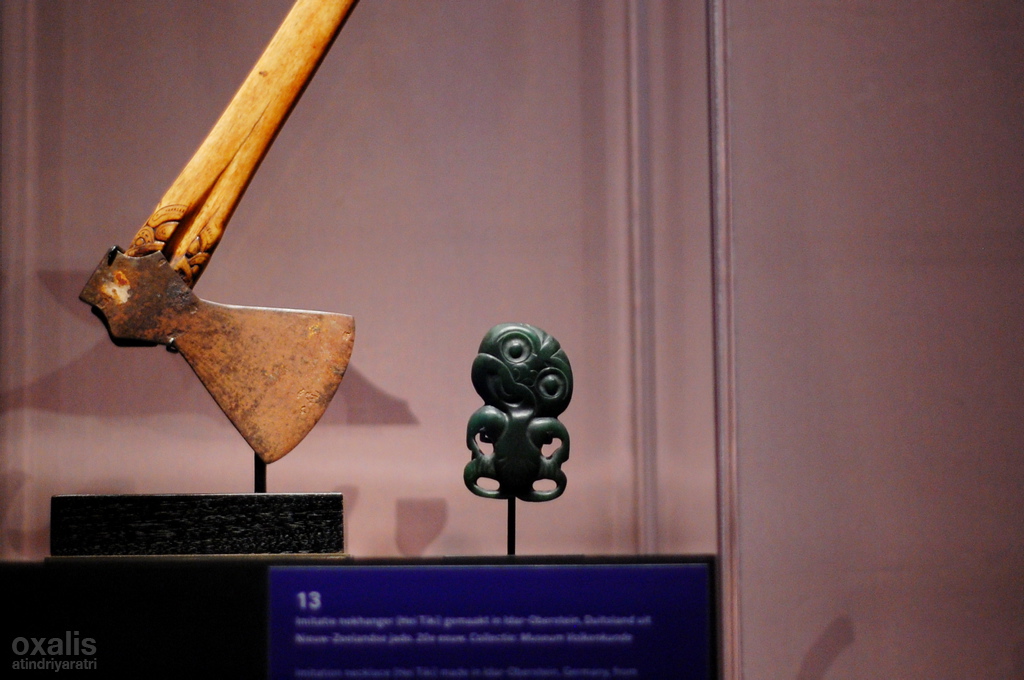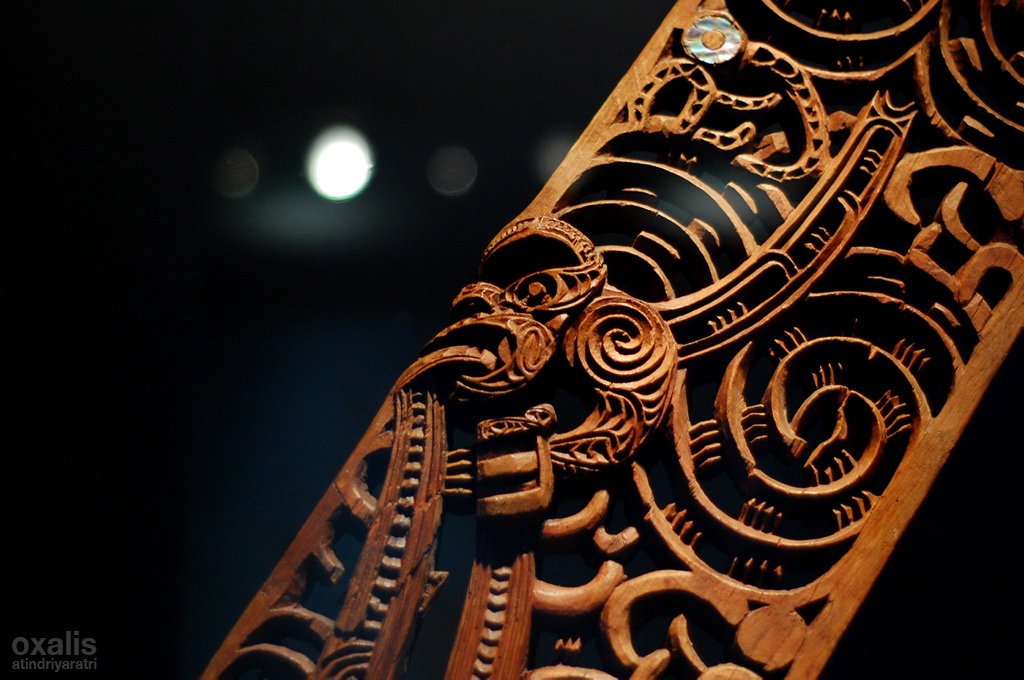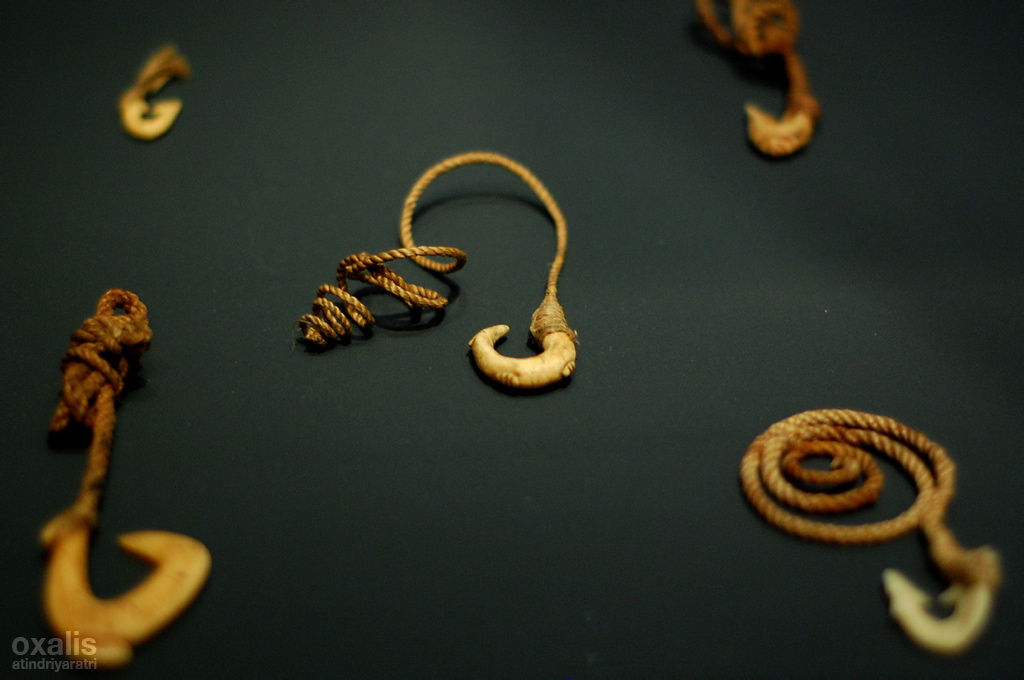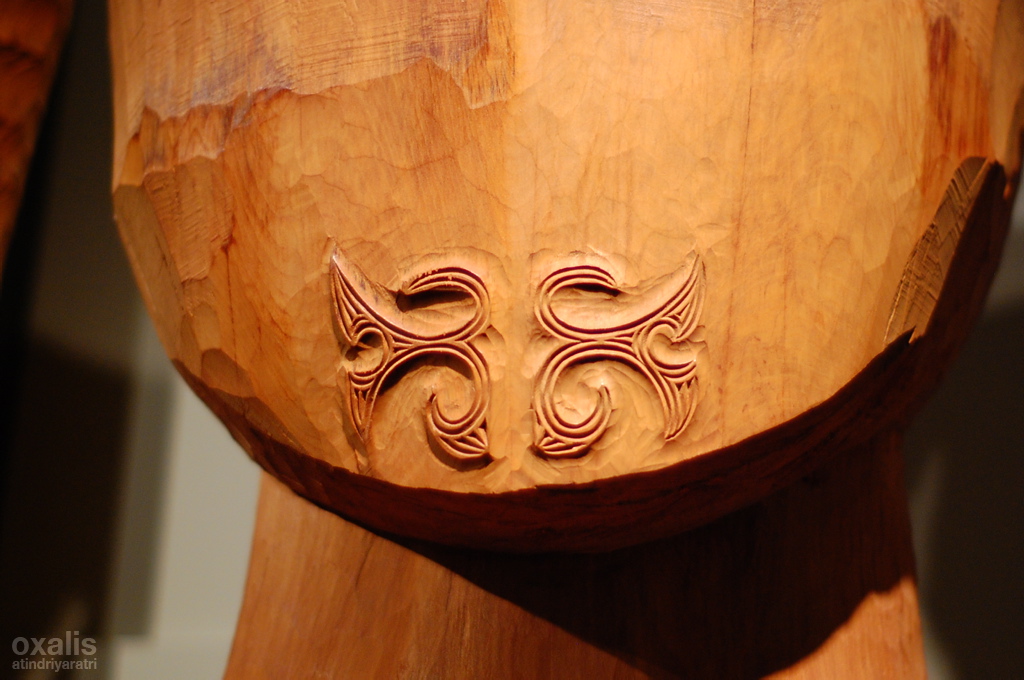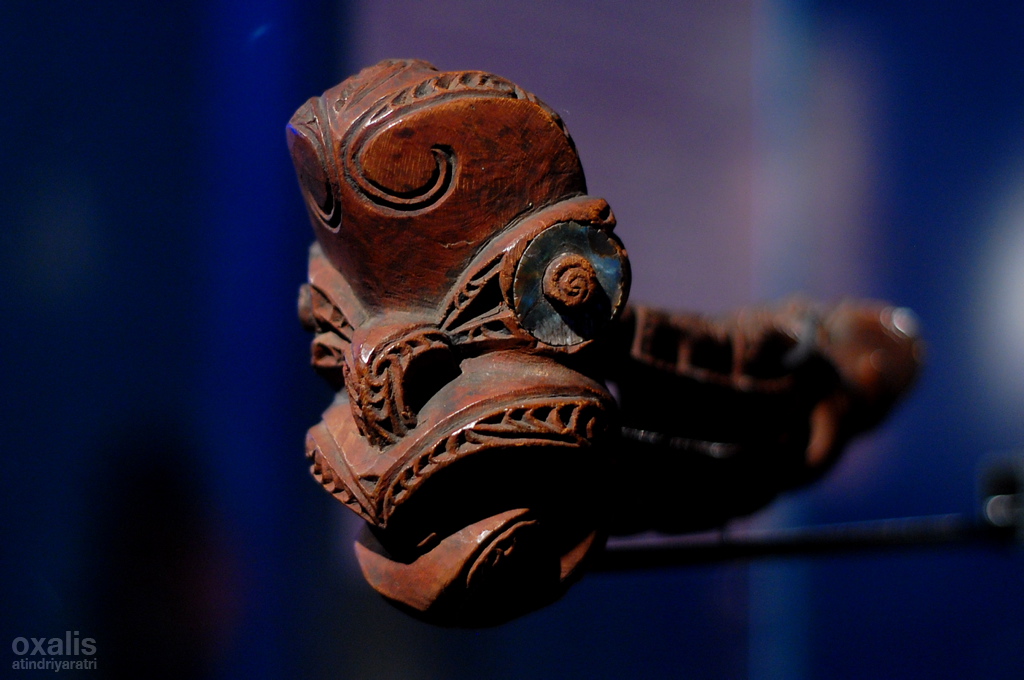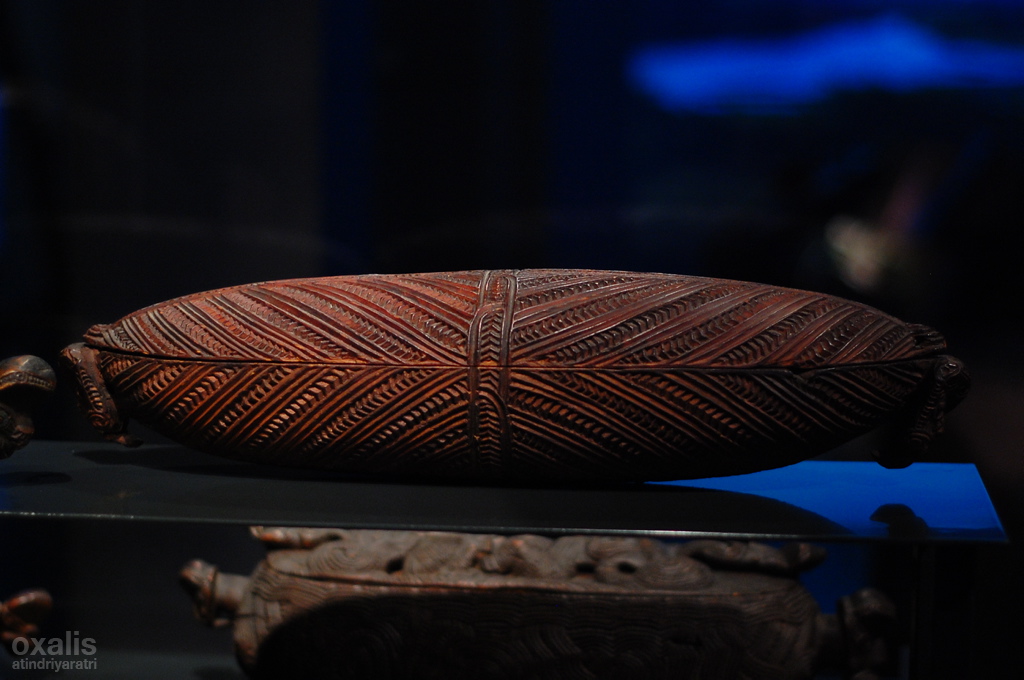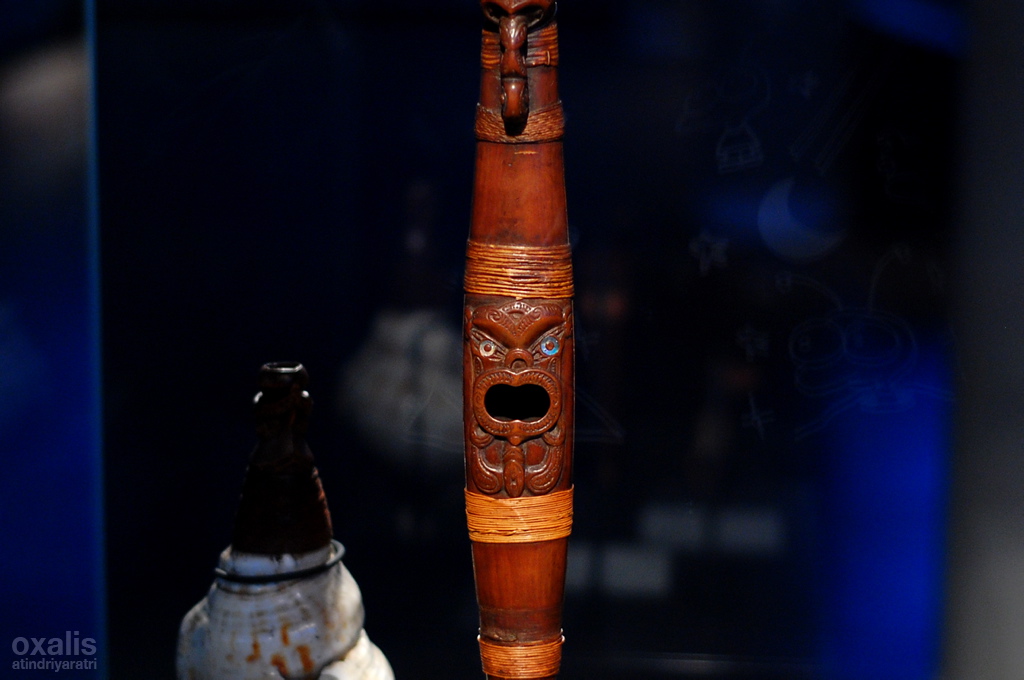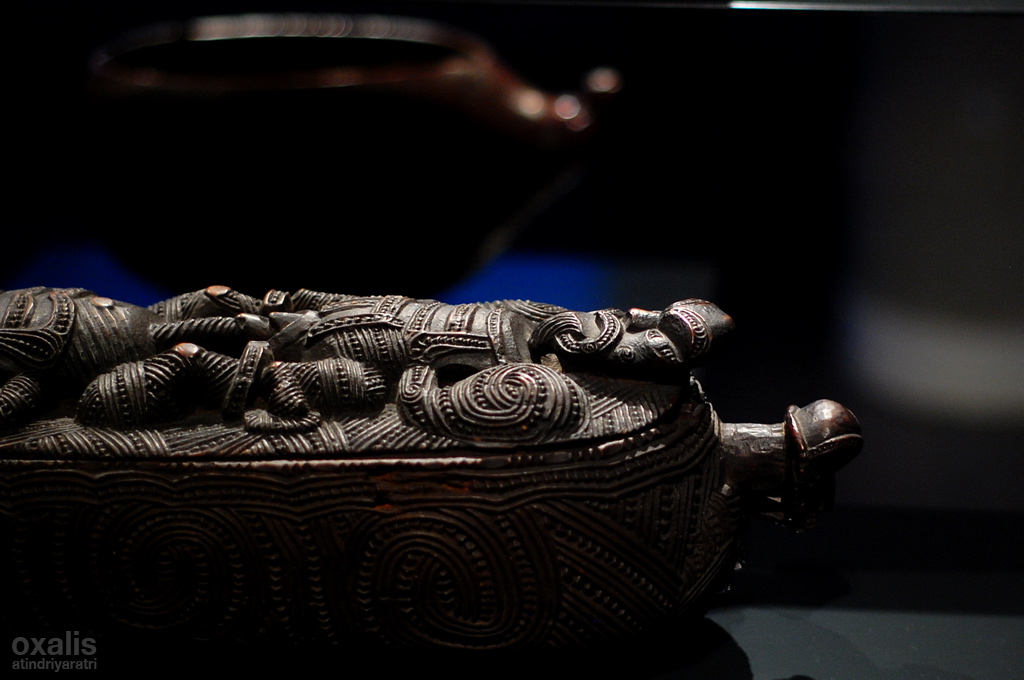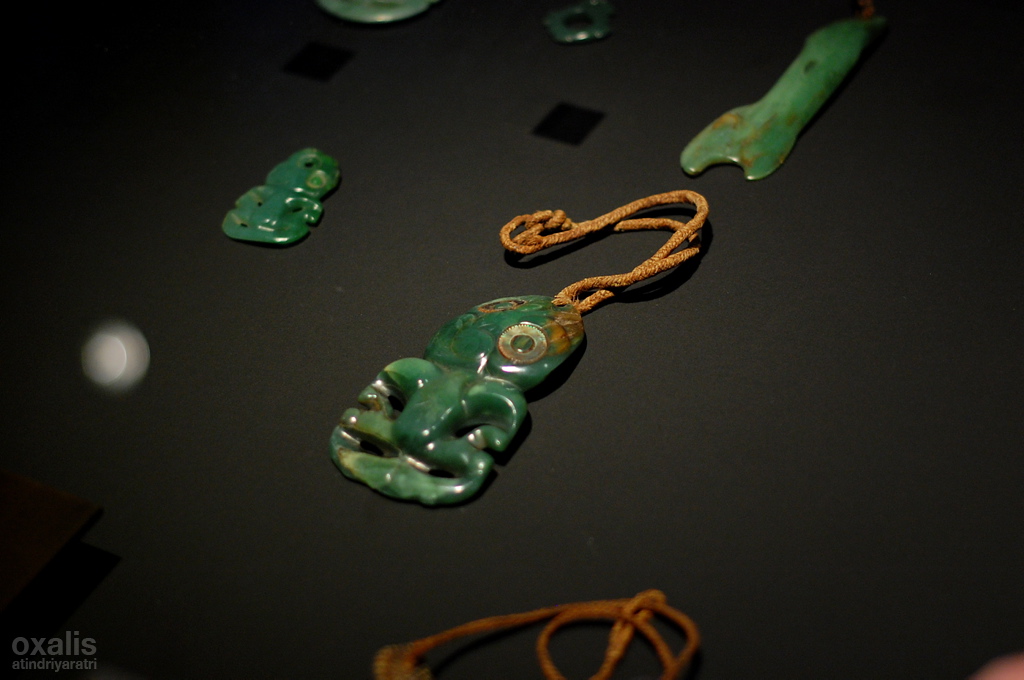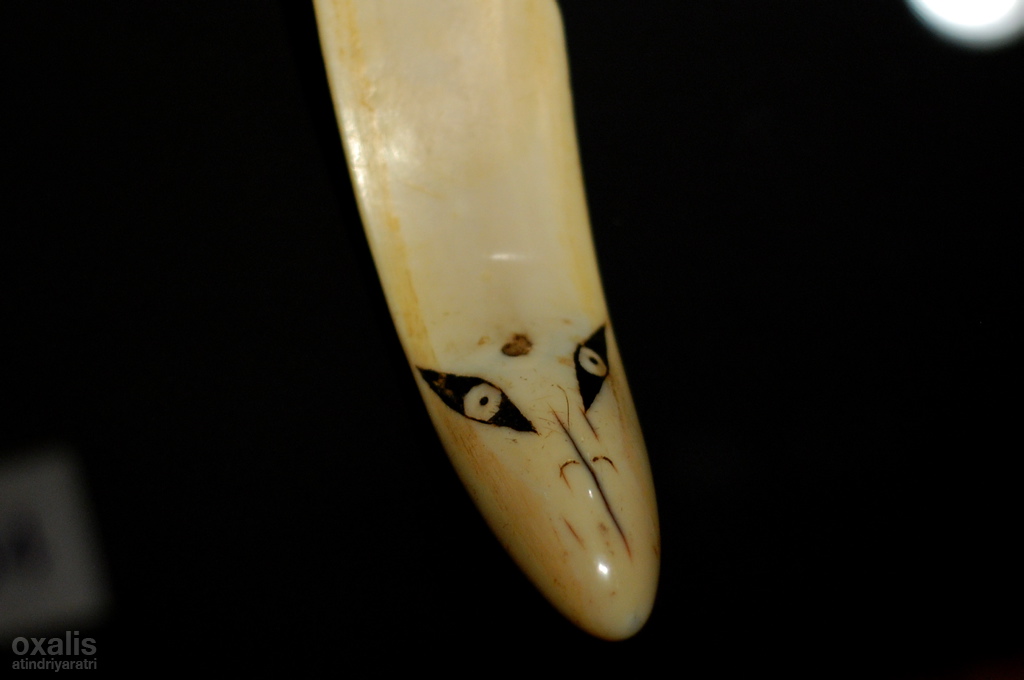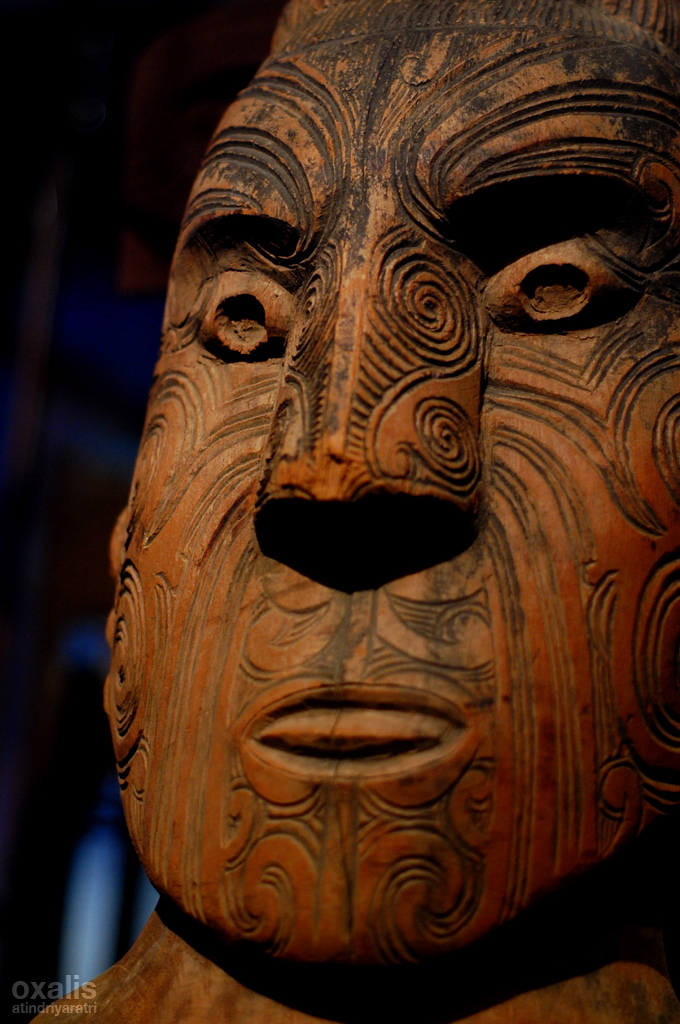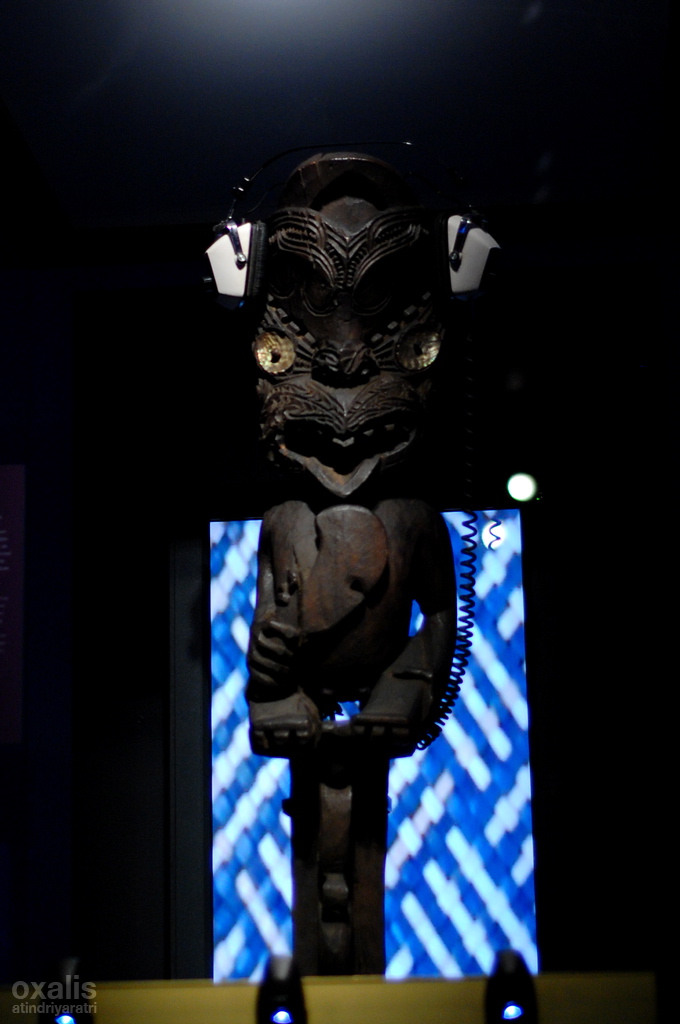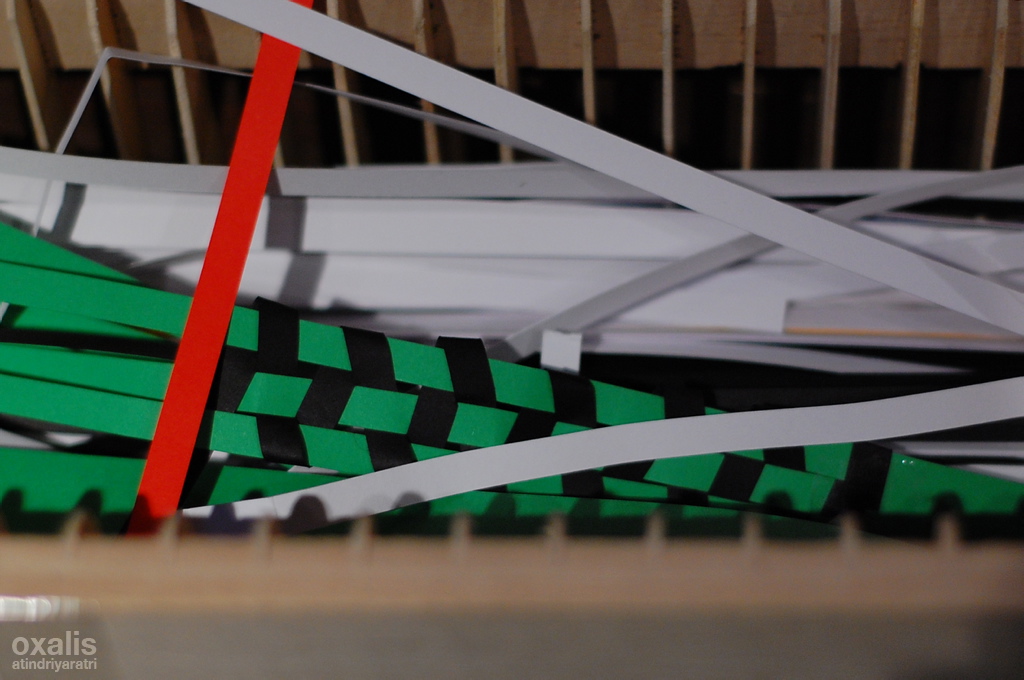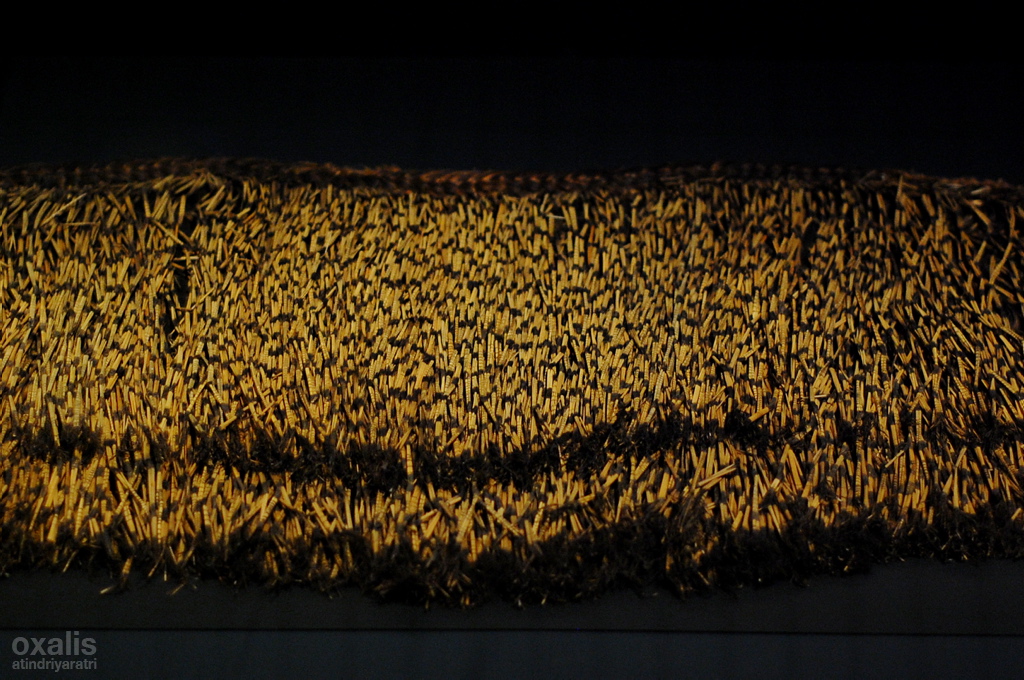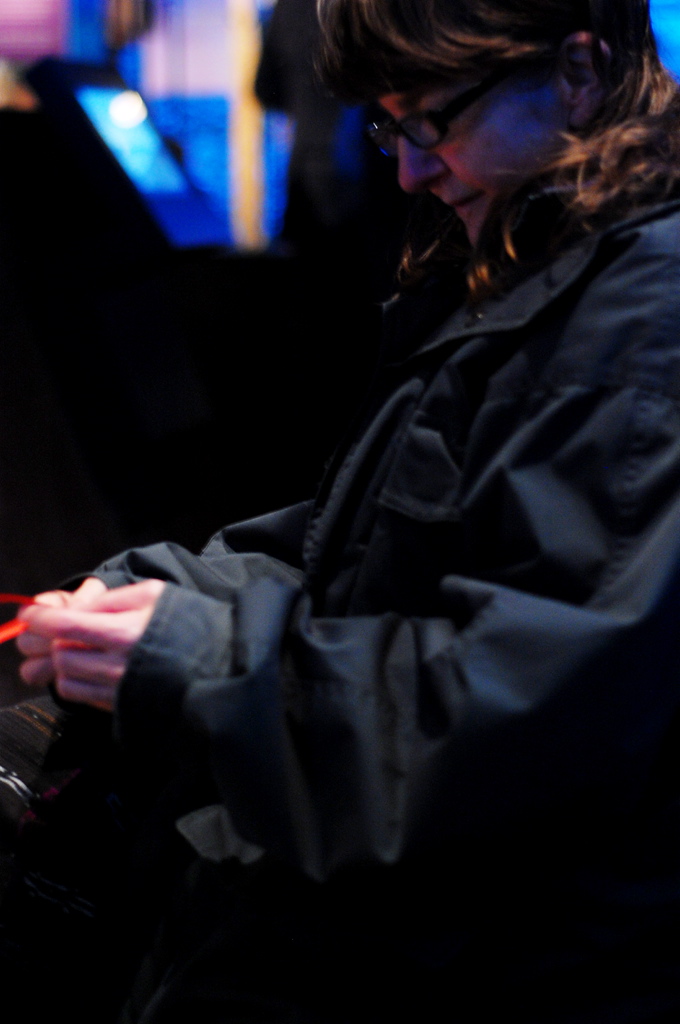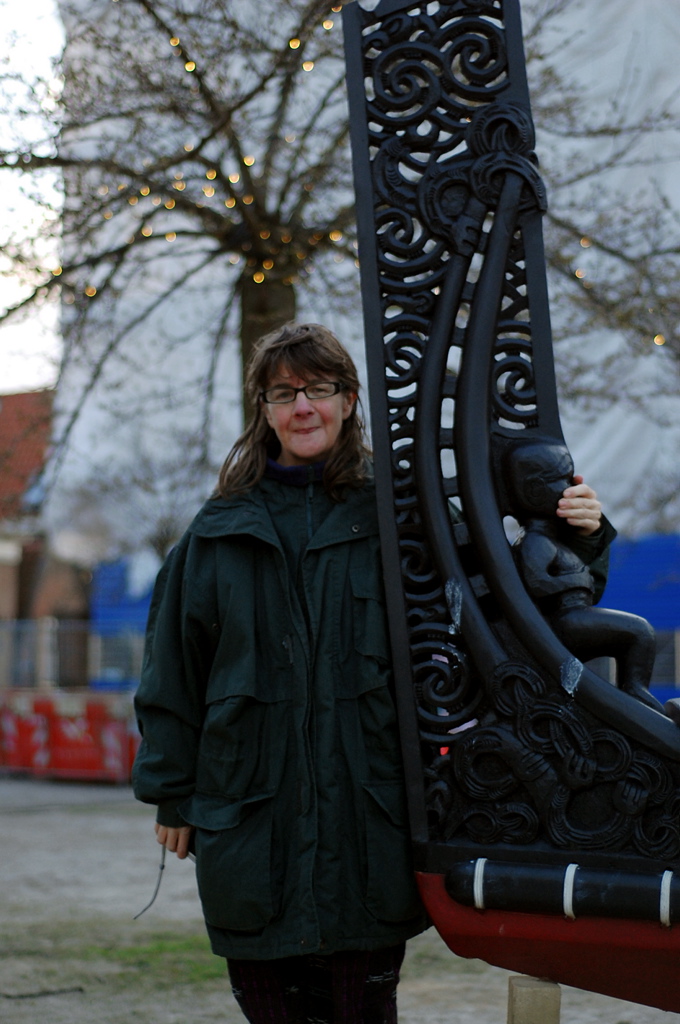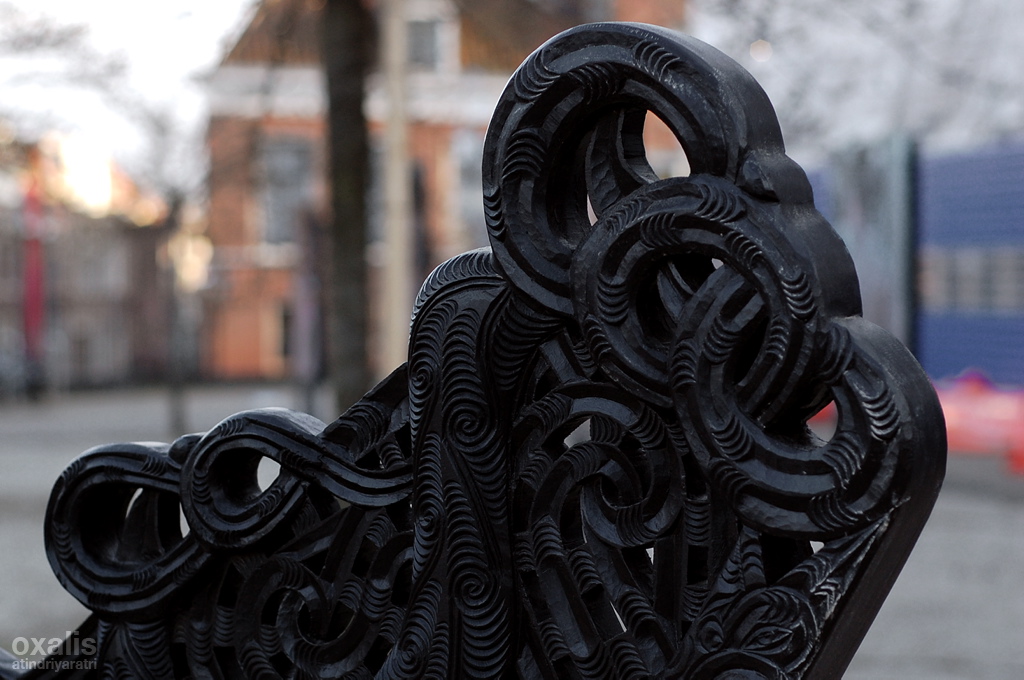I had been wanting to go to the Maori exhibition at the museum Volkenkunde for ages, so I was so happy when Sonja, a good friend from Media Tech (alumna) of New Zealand descent, offered me a guided tour through the exhibition.
We went there last week on Wednesday afternoon, March 9, 2011. Before we started our walk through the museum, we watched a short video about making the waka, the traditional Maori canoe specially made for the museum. The boat was completely built in New Zealand, shipped to the Netherlands in several parts, and assembled in Leiden. The canoe was run through the canals of Leiden at the exhibition opening in October.
The beginning of the exhibition was a set of screens, projecting a video of the contemporary Maori song “Tangaroa (God of the Sea)” by Tiki Taane.
We had a look at the main artefacts and short histories of the Maori in New Zealand. Maori people originated from Polynesia, a group of islands in the Pacific Ocean. Around the 13th century, some brave Polynesian seamen arrived to settle on the empty land. Despite severe winters, they stayed there as human pioneers. A few hundred years later a large group of Polynesians migrated to the islands.
Dutch sailors had arrived in the 17th century but they could not set their foot on the southern land. The information I read in the exhibition claimed that the natives were so savage that the Dutch did not dare to set foot there. However, according to some New Zealanders, the Dutch started to fire cannons at the islands, provoking the Maori. So their action was merely self-defence. The next section of the exhibition was a part where the museum reconstructed a traditional meeting house, with Maori carvings decorating the interior. Inside the meeting house were several small screens playing scenes from “Whale Rider”, a 2002 movie adapted from a book of the same title written by Witi Ihimaera.
In the next room upstairs, was a piece of installation by contemporary artist Lisa Reihana: A traditional statue with headphones inside a glass box. Three telephone receivers were placed near the installation, with which we could hear three different sounds about New Zealand. In the same room, a diverse household
There was also a small section where children could make paper weavings, as weavings were also common in Maori culture. Sonja taught me how to make a simple weaving 🙂
Unfortunately, we were running out of time so we could not explore the whole exhibition. But overall it was a very nice experience for me to see how close the Polynesian cultures are to Indonesian. A special thanks to Sonja for giving me a tour to the exhibition from a local perspective.
